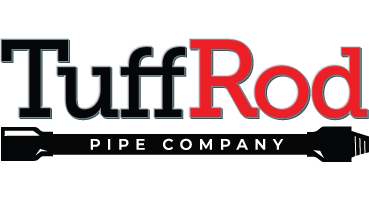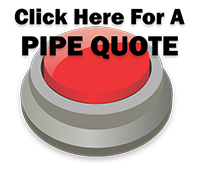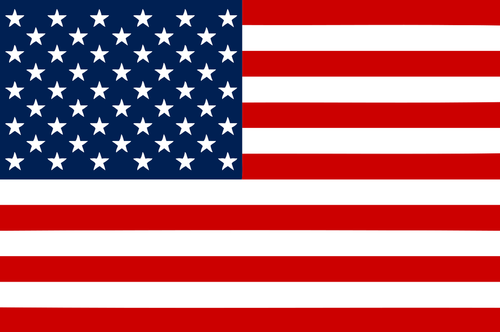Tips for extending the life of your HDD drill stem | TuffRod
Understanding Pipe Bend Radius
Drill Pipe has the ability to bend based on the Steel Grade, Manufacturing Method, and Dimension of the pipe. One of the most common problems that drillers experience is premature rod failure (permanent bends or breaks) caused by over-steering the pipe / exceeding the allowable bend radius.Here are some tips to allow you to understand bend radius and maximize the life of your drill stem.
Know the Bend Radius of your Pipe. Depending on your HDD click on your brand below to find the radius for your drill pipe
- Vermeer® Drill Pipe Specifications
- Ditch Witch® Drill Rod Specifications
- All other Manufacturers
- Range 2 Drill Pipe
Here is an example using D80x100 rod:
The stated bend radius is 7.5%, and you are using a 15’ drill stem, the math tells you that is 1/2% per foot. (7.5% divided by 15’)
That does NOT mean that you can bend that rod 7.5% in the first 5’ and then nothing over the next 10’. Bend radius assumes evenly applied bend.
That does NOT mean that you can bend that rod 7.5% in the first 5’ and then nothing over the next 10’. Bend radius assumes evenly applied bend.
Understanding Make-Up Torque
Make-Up Torque: Drill pipe should be made up to the recommended make-up torque.Please contact a TuffRod Sales professional for assistance determining the appropriate make-up torque for your drill rod.
If your pipe is not made-up to the recommended torque, you run the risk of making up the connection downhole and damaging the threads.
Maximum Applicable Torque: If you don’t know the Maximum Applicable Torque for your Drill Pipe, depending on your HDD click on the Click on your HDD brand below to find the radius for your drill pipe. Next, navigate to the appropriate page for the drill and find the Max Torque (ft./lbs.) of your pipe.
- Vermeer® Drill Pipe Specifications
- Ditch Witch® Drill Rod Specifications
- All other Manufacturers
- Range 2 Drill Pipe
What happens when you over Torque the connection?
HDD drill pipe is a Double Shouldered connection. The face of the box mates with the shoulder of the pin to form the Exterior torque shoulder, and the nose of the pin mates into the back of the box to form the internal torque shoulder.When you over torque the connection, the material is forced to move. The consequence of over torque is flaring of the box as the material tries to climb over the shoulder of the pin, and mushrooming the nose of the pin as it is smashed into the back of the box.
What happens when the box is flared?
When a box is flared, it is now slightly shorter in length. If a flared box were made up with a suitable pin, the Interior Torque Shoulder (nose of pin/back of box) would be made up, however, the Exterior Torque Shoulder where the face of the box mates with the back shoulder of the pin would not be completely made up.Thread wear will accelerate because it is now a single shoulder connection and more stress is applied to other areas reducing the life of the rod.
What happens when the pin is mushroomed?
A mushroomed pin is shorter than a new pin. If a mushroomed pin were made up with a good box, the Exterior Torque Shoulder (face of box/back shoulder of the pin) would be made up, however, the Interior Torque Shoulder where the pin mates into the back of the box would not be made up as the pin is slightly too short.Thread wear will accelerate because it is now a single shoulder connection and more stress is applied to other areas reducing the life of the rod.
Rotate your lead Rod
It’s not always convenient, but it is necessary to rotate your lead rod.Consider this example:
If you have 500’ feet of drill stem on your machine and you shoot out the entire string 10 times, you have put a mile of use out and back on the lead rod, while the last rod in the shot has barely entered the ground. It still has the paint on it.
Rotating your lead rod is an effective method to even the wear on your rods and extend the life.
Rotating your lead rod is an effective method to even the wear on your rods and extend the life.
Change your Saver Sub
The Saver Sub is a workhorse – it sees every piece of pipe twice on each bore. If your saver sub-exhibits thread wear, it can transfer that wear to the drill stem. And always replace your saver sub when you purchase a new rack of rods!Integrating New Pipe with a used string
Never mix the old and the new pipe together. If you need to add new pipe to an old string, they should be run together at the front or back of the string. This ensures that there will be only one connection of a new and used rod.Integrating Used Pipe with a newer string
Never mix the old and the new pipe together. If you need to add used pipe to a newer string they should be run together at the back of string. This ensures there will be only one connection of a new and used rod.Check your threads
It is important to check your threads for wear and make sure they are free of sand, dirt and grit. Foreign debris will prematurely wear the threads. You should visually inspect the connections for galling or sharp threads.How do I know when the rod is worn out?
You don’t. However, there are a couple of things you can do to assess the current condition of your rod.
First, visually inspect the connections. If the connections look good and they don’t show signs of galling that’s a good sign.
Next, check that the pin and box torque shoulders. You should keep the jaws 1/2″ from the edge of the shoulders to avoid deformation/damage.
Finally, take a set of calipers and measure the outside diameter of both the box and pin ends of the tool joints. Compare this measurement to the tool joint dimensions of new pipe.
Contact a TuffRod sales representative with the results.




